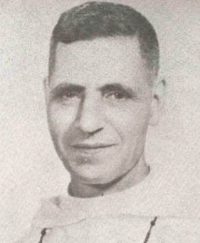A provost official –one of the many new friends with whom we had been fraternizing– offered me a trip to Manila in his jeep. I accepted willingly, in order to have a personal knowledge of what is happening in the Capital.
We left at 7:00 in the evening and we were at Balintawak by midnight. It was a very fast trip by the standards of these times. All the bridges had been blown up by the Japanese and had been replaced by pontoon bridges constructed by the U.S. Army Corps of Engineers. The way these soldiers are working is admirable.
We did not attempt to enter the city. Shelling was very intense. We spent the night in the jeep, parked in the middle of thick grasses. I did not sleep a wink as I watched the shrubs and grasses move, not by the wind but by some snipers. I heard the thundering booms of the guns and the whistling flight of shells as they rent the air over our heads, while in the city, vast columns of smoke were rising and big fires were raging.
At the break of day I entered the main gate of the University for the first time in three years. I found the Seminary filled with refugees. Most of them came from this northern sector of Manila where several blocks of houses had been burned by fire caused by Japanese, or started by Filipinos who had been paid or forced to burn them. The Education building has been converted to a hospital for civilian casualties who came from the south in uncontrollable influx.
The internees are still living in the main building in other smaller ones. They were huddled in rooms and corridors, but free, happy, well fed and properly clothed. Many of them are gradually recovering from their skeletal countenance and their cadaveric paleness due to starvation under the Japanese regime.
During these past months, some eight to twelve internees were dying daily; the others are so weak they cannot stand on their feet. The beehive activities on the campus, with the incessant buzzing produced by the movements, the coming and going of soldiers, internees, refugees and vehicles are in contrast with the sepulchral silence of this place.
